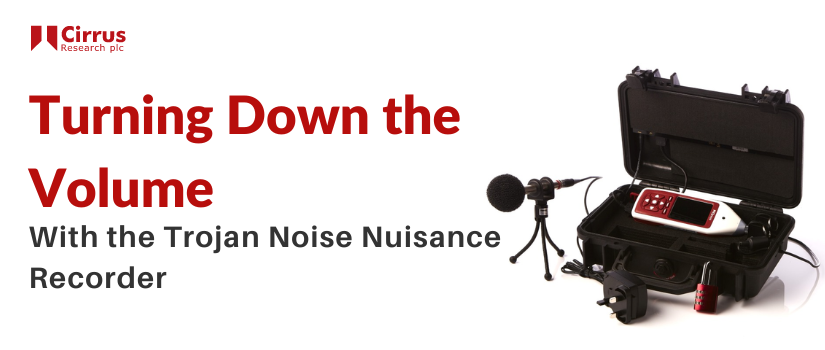Looking to buy a sound level meter? You’ll probably see the term “data logging sound level meter” quite frequently. But what exactly is a data logging sound level meter and what does it mean for your noise measurements?
Sound level meters have come a long way since Cirrus started manufacturing their own models in the 1970s. Advances in computing technology have made it far easier for sound level meters to measure, process, and calculate noise data. This technology also enables sound level meters to record all parameters simultaneously rather than over repeated measurements.
So, what is a data logging sound level meter? Simply put, it’s a sound level meter that records and stores data over time. This noise measurement data is either stored on the sound level meter’s built-in memory or to a connected stored device.
How Does a Data Logging Sound Level Meter Help?
Whether you’re planning to use your sound level meter as a handheld device or mounted on a tripod, data logging can be extremely useful. Because your data logging sound level meter is equipped with its own internal memory, you can set-up the instrument to measure and capture all the parameters you need at user-defined intervals.
Once you’ve completed your noise assessment, you can then download the measurements from your data logging sound level meter to your PC and store the readings. Once you have the readings, it’s easy to view them, analyse them and share reports.
Without a data logging sound level meter, you would need to manually record the sound levels and parameters as the measurement was taking place. With data logging, you can take the measurement you need safe in the knowledge that everything has been stored on the internal memory for later viewing.
Where Can a Data Logging Sound Level Meter be Used?
Every application can benefit from a data logging sound level meter. Whether it’s a noise at work assessment or environmental noise monitoring. The ability to measure and store your parameter data will save time as you’re not manually recording readings and producing reports.
For example, according to the 2005 Control of Noise at Work Regulations, a sound level meter that will be used to make a measurement should be capable of measuring:
- Equivalent Continuous Sound Pressure Level (LAeq)
- C-Weighted Peak Sound Pressure (LCPeak)
If you find a data logging sound level meter that can measure these parameters, you know you’ve got a sound level meter that will give you all the data you need and store it as you go along.
The Optimus Data Logging Sound Level Meter & NoiseTools
With their large OLED display, the Optimus Data Logging Sound Level Meters will show you key parameters during the measurement. This can quickly indicate if there is a problem you need to investigate further, but backs that up by storing the data to its internal memory. The Optimus comes with 4 GB of internal memory as standard, which can be upgraded to 32 GB on request.
The data you’ve collected can then be downloaded to your PC using our NoiseTools software. This is included with the Optimus Sound Level Meter, so you can easily download and analyse your data, as well as generate custom reports.
NoiseTools also gives you the ability to set the intervals at which your data logging sound level meter measures, whether it’s every second, 5 seconds or any other interval you need.
Cirrus has a number of data logging sound levels for various applications:
- Optimus Red Data Logging Sound Level Meter for occupational noise measurements
- Optimus Green Data Logging Sound Level Meter for occupational and environmental noise measurements
Need More Information?
So there you have it. A data logging sound level meter is capable of storing your noise measurement data to its built-in memory. This allows you to download and analyse your data at a PC and saves you from having to manually record noise levels during an assessment.
Need to know more about data logging sound level meters? Contact our Noise Experts today to discuss the data logging capabilities of our noise measurement instruments.



